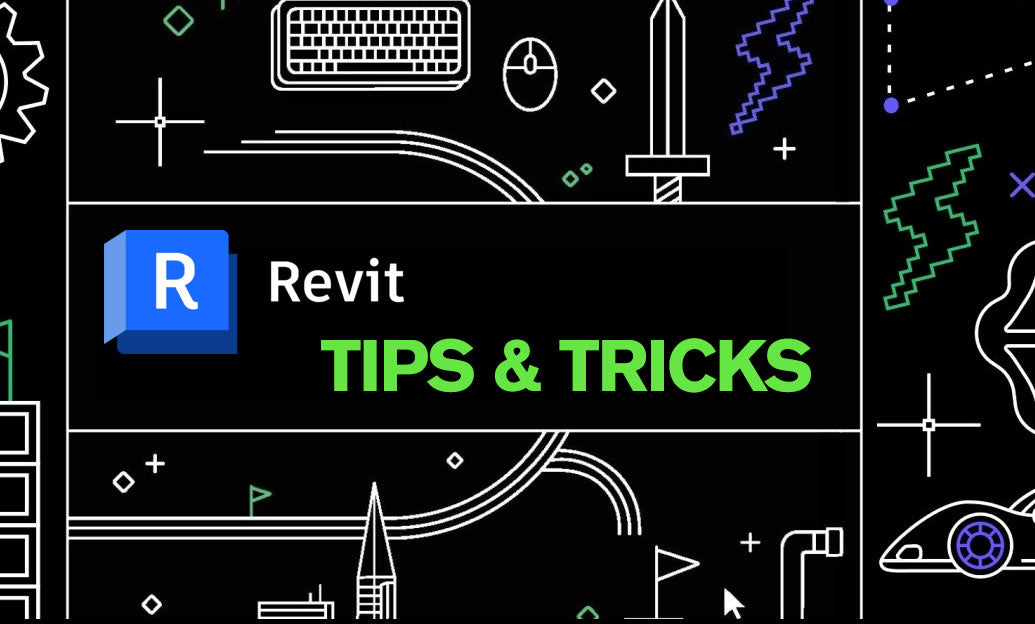Your Cart is Empty
Customer Testimonials
-
"Great customer service. The folks at Novedge were super helpful in navigating a somewhat complicated order including software upgrades and serial numbers in various stages of inactivity. They were friendly and helpful throughout the process.."
Ruben Ruckmark
"Quick & very helpful. We have been using Novedge for years and are very happy with their quick service when we need to make a purchase and excellent support resolving any issues."
Will Woodson
"Scott is the best. He reminds me about subscriptions dates, guides me in the correct direction for updates. He always responds promptly to me. He is literally the reason I continue to work with Novedge and will do so in the future."
Edward Mchugh
"Calvin Lok is “the man”. After my purchase of Sketchup 2021, he called me and provided step-by-step instructions to ease me through difficulties I was having with the setup of my new software."
Mike Borzage
Revit Tip: Maximizing Project Efficiency with Strategic Use of Revit Filters
August 05, 2024 2 min read

Efficiently using Revit Filters can significantly improve the visual control of your project, allowing for a more streamlined and productive workflow. Here are some essential tips for using filters effectively in Revit:
- Understand Filter Categories: Filters in Revit are category-specific. Ensure you select the correct category for your filter to apply it to the desired elements.
- Use Naming Conventions: Name your filters clearly and consistently to reflect their purpose. This will help you and your team quickly identify the correct filter to use or edit in the future.
- Plan Filters Strategically: Before creating filters, plan what you want to achieve with them. This can include controlling visibility, graphical overrides, or segregating data for schedules.
- Rules-Based Criteria: Filters work by setting rules-based criteria, such as parameter values or element properties. Use these rules to precisely target the elements you want to control.
- Graphical Overrides: Use filters to override graphics in a view. You can change the line color, pattern, transparency, and more to highlight specific elements or indicate a particular status.
- Combine Filters: Multiple filters can be applied to a single view. Experiment with combining filters to achieve complex visual effects or to refine your control over element display.
- Use Templates: Save time by using View Templates. Once you've set up filters and overrides in a view, create a template to apply these settings to other views automatically.
- Filter Overrides in Schedules: Filters can also control the appearance of elements in schedules. Use this to visually differentiate or emphasize information in your schedule views.
- Optimize Performance: While filters are powerful, using too many in a single view can impact performance. Use only the necessary filters and turn off any that are not needed for the current task.
- Stay Organized: Regularly review and manage your filters. Remove obsolete ones and update those that need changes to maintain efficiency and prevent confusion.
Implementing the above tips will allow for better management and visualization of your Revit models. For a comprehensive selection of Revit tools and resources, consider exploring options available from NOVEDGE. NOVEDGE is a trusted retailer for design and engineering software, offering a wide range of products that can complement your use of Revit Filters and enhance your overall project efficiency.
You can find all the Revit products on the NOVEDGE web site at this page.
Also in Design News

ZBrush Tip: Optimizing ZBrush Models with the Curve Bridge Brush Technique
January 15, 2025 2 min read
Read More
Revit Tip: Enhance Design Precision with Revit's Radial Array Tool
January 15, 2025 2 min read
Read More
AutoCAD Tip: Mastering AutoCAD's Revolve and Sweep Tools for Advanced 3D Modeling
January 15, 2025 2 min read
Read MoreSubscribe
Sign up to get the latest on sales, new releases and more …


